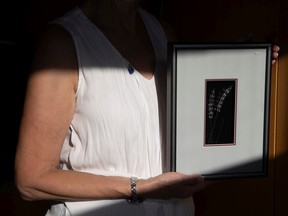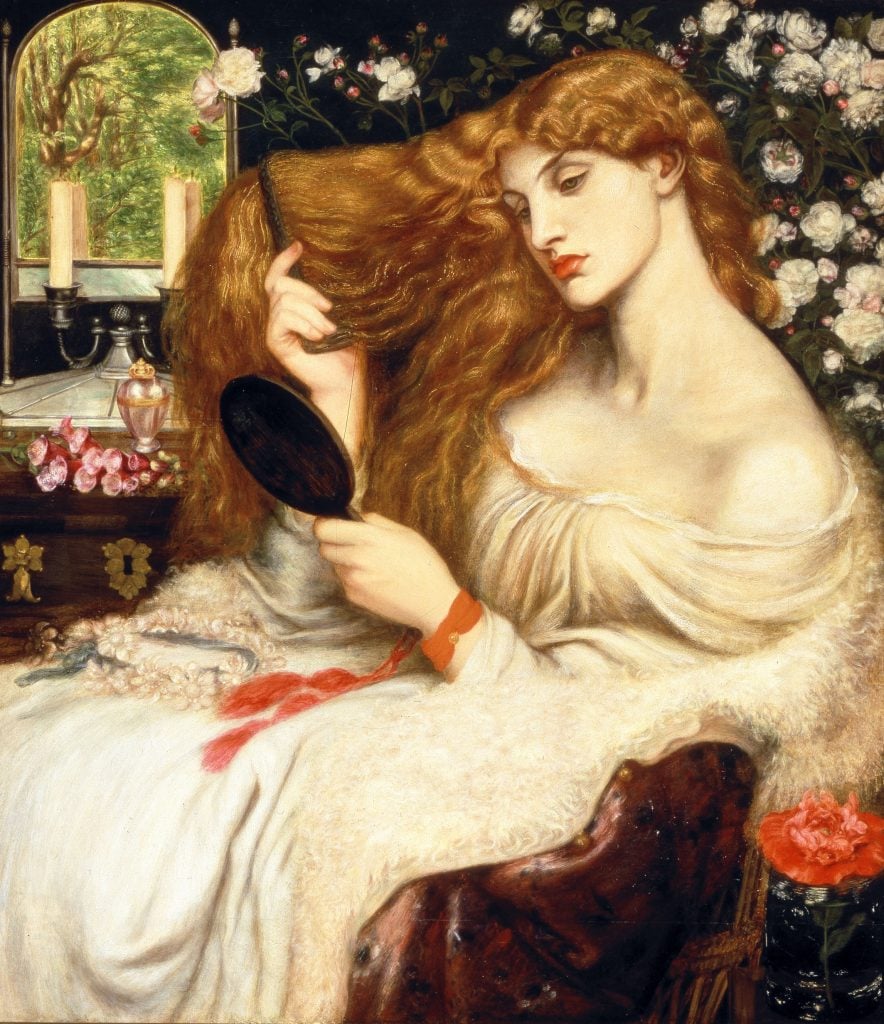Reviews and recommendations are unbiased and products are independently selected. Postmedia may earn an affiliate commission from purchases made through links on this page.
Art
Blank canvas: Charity art sale making COVID comeback – Regina Leader Post
Art from the Attic — a donation-based art sale that raises money for charity — is set to return on Sept. 17 after a two-year COVID hiatus.

Article content
Sherry Wolf believes that artwork should be seen to be appreciated.
Advertisement 2
Article content
In fact, she’s counting on it.
Article content
As one of the volunteer organizers behind Art from the Attic — a long-running charity event in Regina — Wolf is eager to help revive the annual art sale after it was cancelled for two straight years due to the COVID pandemic.
As the name implies, Art from the Attic relies on donations from the public. The pieces are sold for charity during a one-day event that runs Sept. 17 from 10 a.m. to 4 p.m. at the Cathedral Neighbourhood Centre (2900 13th Ave.).
Advertisement 3
Article content
There’s no entry free and the art is “priced to sell.”
The event is operated by the Regina branch of Grandmothers 4 Grandmothers, a national non-profit organization that partners with the Stephen Lewis Foundation. The Toronto-based foundation was created in 2003 to work with grassroots groups in sub-Saharan Africa. Funds are earmarked to support “grandmothers” raising a generation of children who’ve been orphaned due to AIDS and HIV.
According to the Stephen Lewis Foundation, it has raised over $40 million through the grandmothers campaign while contributing to 2,100 projects and 335 community-based organizations in 15 African countries.
The Regina group has been part of that initiative since 2006, but the arrival of COVID presented some unique challenges.
Advertisement 4
Article content
“Like most non-profit organizations, we’ve all been struggling to try and do what’s normal for us, which is fundraise,” Wolf said. “It has been hard. We’ve had some creative ideas (to raise money online) … but it hasn’t quite been the same.”

If not for the pandemic, Art from the Attic would be celebrating its 10th anniversary in 2022. The Regina-based grandmothers are also closing in on $1 million in total charitable contributions since their organization’s inception.
“We’re well over the $900,000 mark,” Wolf noted “We do lots of small fundraisers so it’s a big deal for us to get close to that milestone. We’re hoping with this sale — or by early next year — that we’ll be able to do that. It’s exciting.”
In order to reach their goal, organizers are counting on people to make their artwork available for donation. There are four drop-off locations: Atelier Arts (2075 Albert St.), Benjamin Moore Elements of Colour (4350 Albert St.), Colourburst Paint and Wallpaper (551 Albert St.), and Independent Living (3870 E. Eastgate Drive).
Advertisement 5
Article content
The deadline is Sept. 13.
“We typically get a push at the very end,” Wolf said. “We’re hoping more donations will come in. Our sale depends on the donations. It’s coming in but not as quickly as other years. It takes a while to get back in the swing of things.”
Art from the Attic only accepts two-dimensional pieces (no sculptures or pottery). Donations can be original artwork, prints, photos, water colour, acrylic, oil, metal art, fabric art, etc. — basically “anything that people are willing to donate to us that can hang on a wall.”
Before the artwork goes up for sale, it’s inspected, cleaned and refurbished (when necessary). That process might include replacement of the matting and frame to make it more appealing for potential buyers.
The end result is a piece of art that’s almost like new, even if it was gathering dust in someone’s attic.
“The Regina community is very generous with donations to us; I think people recognize it’s a good cause and it’s a way to recycle their art,” added Wolf, who expects the sale to be well-attended, if history is any indicator.
“People are (usually) lined up at the door on Saturday morning. People know it’s good art and there’s lots of great bargains. It has quite a bit of a following and we’re hoping that’s what happens this year.”

Art
Art Bites: Millais's Muse Fell Ill After Posing for 'Ophelia' – artnet News
What’s the deal with Leonardo’s harpsichord-viola? Why were Impressionists obsessed with the color purple? Art Bites brings you a surprising fact, lesser-known anecdote, or curious event from art history. These delightful nuggets shed light on the lives of famed artists and decode their practices, while adding new layers of intrigue to celebrated masterpieces.
Beauty is pain. Elizabeth Siddal, one of art history’s most famous muses, had intimate experience with this adage. Siddal first met artist Walter Deverell in 1849, the year she turned 20, while working for a London milliner and soon became a favored model of the Pre-Raphaelite Brotherhood artists. She was featured in William Holman Hunt’s A Converted British Family Sheltering a Christian Missionary from the Persecution of the Druids (1849–50) and most famously in John Everett Millais’s Ophelia (1851–52). It was during her contribution to the latter painting, that she fell ill.
Beauty was a matter of pain for Millais, too. In a rare move for artists of the era, he spent five months painting scenery for Ophelia in a hut along Surrey’s Hogsmill River. “My martyrdom is more trying than any I have hitherto experienced,” Millais remarked, describing “muscular” flies and powerful winds. “The painting of a picture under such circumstances would be a greater punishment to a murderer than hanging.”
The Tate notes that Millais devoted only four months to portraying Ophelia herself. Siddal agreed to stand in for the doomed beauty. She spent long hours in a bathtub at the artist’s Gower Street studio, wearing a cheap gown Millais acquired. “Today I have purchased a really splendid lady’s ancient dress—all flowered over in silver embroidery,” he wrote. “It cost me, old and dirty as it is, four pounds.” The dress is still in the Tate.
Millais arranged oil lamps beneath Siddall’s tub to keep her bathwater warm. One of those lamps went out. Millais didn’t notice, and Siddal didn’t complain—by then she knew that beauty means pain. The water grew so frigid that Siddall fell ill with pneumonia. Siddall’s father ordered Millais to cover her extensive medical bills. The artist allegedly made off paying the least possible amount.


Siddal in Dante Gabriel Rossetti’s Lady Lilith (1866–68; 1872–73). Collection of the Delaware Art Museum.
Siddal made a full recovery from her Ophelia-induced illness, but the bout proved foreshadowing. Siddall likely met Pre-Raphaelite Brotherhood painter Dante Gabriel Rossetti while they both sat for Deverell’s massive oil painting Twelfth Night, Act II, Scene IV (1850). Siddall fell for Rossetti, who made her his sole model. In 1853, Rossetti took Siddall on as an art student. He taught her to draw, and advised her to drop the last letter from her surname. By 1857, Siddal became one of the only women to exhibit alongside the Pre-Raphaelites. Over the next 15 years, she produced numerous drawings, paintings, and poems, often inspired by Lord Tennyson, her favorite poet since discovering his verses on a butter wrapping as a kid.
As time wore on, Siddal grew fearful that her philandering beau would abandon her for a younger muse. While Rossetti resisted their marriage due to Siddal’s working class background, the two wed in 1860. It wasn’t enough to stave off her consumptive melancholy. Siddal died from a laudanum overdose, a rumored suicide, in 1862—decades before 1894, when Ophelia was included the original Henry Tate gift. It’s one of the museum’s most popular paintings today, due in no small part to Siddal’s sublime beauty, the pain it brought her.
Follow Artnet News on Facebook:
Want to stay ahead of the art world? Subscribe to our newsletter to get the breaking news, eye-opening interviews, and incisive critical takes that drive the conversation forward.
Art
Striking Art Gallery of Ontario workers reach tentative deal with museum – Toronto Star


/* OOVVUU Targeting */
const path = ‘/news/canada’;
const siteName = ‘thestar.com’;
let domain = ‘thestar.com’;
if (siteName === ‘thestar.com’)
domain = ‘thestar.com’;
else if (siteName === ‘niagarafallsreview.ca’)
domain = ‘niagara_falls_review’;
else if (siteName === ‘stcatharinesstandard.ca’)
domain = ‘st_catharines_standard’;
else if (siteName === ‘thepeterboroughexaminer.com’)
domain = ‘the_peterborough_examiner’;
else if (siteName === ‘therecord.com’)
domain = ‘the_record’;
else if (siteName === ‘thespec.com’)
domain = ‘the_spec’;
else if (siteName === ‘wellandtribune.ca’)
domain = ‘welland_tribune’;
else if (siteName === ‘bramptonguardian.com’)
domain = ‘brampton_guardian’;
else if (siteName === ‘caledonenterprise.com’)
domain = ‘caledon_enterprise’;
else if (siteName === ‘cambridgetimes.ca’)
domain = ‘cambridge_times’;
else if (siteName === ‘durhamregion.com’)
domain = ‘durham_region’;
else if (siteName === ‘guelphmercury.com’)
domain = ‘guelph_mercury’;
else if (siteName === ‘insidehalton.com’)
domain = ‘inside_halton’;
else if (siteName === ‘insideottawavalley.com’)
domain = ‘inside_ottawa_valley’;
else if (siteName === ‘mississauga.com’)
domain = ‘mississauga’;
else if (siteName === ‘muskokaregion.com’)
domain = ‘muskoka_region’;
else if (siteName === ‘newhamburgindependent.ca’)
domain = ‘new_hamburg_independent’;
else if (siteName === ‘niagarathisweek.com’)
domain = ‘niagara_this_week’;
else if (siteName === ‘northbaynipissing.com’)
domain = ‘north_bay_nipissing’;
else if (siteName === ‘northumberlandnews.com’)
domain = ‘northumberland_news’;
else if (siteName === ‘orangeville.com’)
domain = ‘orangeville’;
else if (siteName === ‘ourwindsor.ca’)
domain = ‘our_windsor’;
else if (siteName === ‘parrysound.com’)
domain = ‘parrysound’;
else if (siteName === ‘simcoe.com’)
domain = ‘simcoe’;
else if (siteName === ‘theifp.ca’)
domain = ‘the_ifp’;
else if (siteName === ‘waterloochronicle.ca’)
domain = ‘waterloo_chronicle’;
else if (siteName === ‘yorkregion.com’)
domain = ‘york_region’;
let sectionTag = ”;
try
if (domain === ‘thestar.com’ && path.indexOf(‘wires/’) = 0)
sectionTag = ‘/business’;
else if (path.indexOf(‘/autos’) >= 0)
sectionTag = ‘/autos’;
else if (path.indexOf(‘/entertainment’) >= 0)
sectionTag = ‘/entertainment’;
else if (path.indexOf(‘/life’) >= 0)
sectionTag = ‘/life’;
else if (path.indexOf(‘/news’) >= 0)
sectionTag = ‘/news’;
else if (path.indexOf(‘/politics’) >= 0)
sectionTag = ‘/politics’;
else if (path.indexOf(‘/sports’) >= 0)
sectionTag = ‘/sports’;
else if (path.indexOf(‘/opinion’) >= 0)
sectionTag = ‘/opinion’;
} catch (ex)
const descriptionUrl = ‘window.location.href’;
const vid = ‘mediainfo.reference_id’;
const cmsId = ‘2665777’;
let url = `https://pubads.g.doubleclick.net/gampad/ads?iu=/58580620/$domain/video/oovvuu$sectionTag&description_url=$descriptionUrl&vid=$vid&cmsid=$cmsId&tfcd=0&npa=0&sz=640×480&ad_rule=0&gdfp_req=1&output=vast&unviewed_position_start=1&env=vp&impl=s&correlator=`;
url = url.split(‘ ‘).join(”);
window.oovvuuReplacementAdServerURL = url;
TORONTO – The union representing hundreds of striking Art Gallery of Ontario workers says it’s reached a tentative deal with the museum.
The Ontario Public Service Employees Union says they reached the deal late last night, after 16 hours of bargaining.
function buildUserSwitchAccountsForm()
var form = document.getElementById(‘user-local-logout-form-switch-accounts’);
if (form) return;
// build form with javascript since having a form element here breaks the payment modal.
var switchForm = document.createElement(‘form’);
switchForm.setAttribute(‘id’,’user-local-logout-form-switch-accounts’);
switchForm.setAttribute(‘method’,’post’);
switchForm.setAttribute(‘action’,’https://www.thestar.com/tncms/auth/logout/?return=https://www.thestar.com/users/login/?referer_url=https%3A%2F%2Fwww.thestar.com%2Fnews%2Fcanada%2Fstriking-art-gallery-of-ontario-workers-reach-tentative-deal-with-museum%2Farticle_f93dfb4a-141d-5144-bb61-41d842fc7153.html’);
switchForm.setAttribute(‘style’,’display:none;’);
var refUrl = document.createElement(‘input’); //input element, text
refUrl.setAttribute(‘type’,’hidden’);
refUrl.setAttribute(‘name’,’referer_url’);
refUrl.setAttribute(‘value’,’https://www.thestar.com/news/canada/striking-art-gallery-of-ontario-workers-reach-tentative-deal-with-museum/article_f93dfb4a-141d-5144-bb61-41d842fc7153.html’);
var submit = document.createElement(‘input’);
submit.setAttribute(‘type’,’submit’);
submit.setAttribute(‘name’,’logout’);
submit.setAttribute(‘value’,’Logout’);
switchForm.appendChild(refUrl);
switchForm.appendChild(submit);
document.getElementsByTagName(‘body’)[0].appendChild(switchForm);
function handleUserSwitchAccounts()
window.sessionStorage.removeItem(‘bd-viafoura-oidc’); // clear viafoura JWT token
// logout user before sending them to login page via return url
document.getElementById(‘user-local-logout-form-switch-accounts’).submit();
return false;
buildUserSwitchAccountsForm();
console.log(‘=====> bRemoveLastParagraph: ‘,0);
Art
Striking Art Gallery of Ontario workers reach tentative deal with museum – The Globe and Mail


The union representing hundreds of striking Art Gallery of Ontario workers says it’s reached a tentative deal with the museum.
The Ontario Public Service Employees Union says they reached the deal late last night, after 16 hours of bargaining.
The downtown Toronto museum has been closed for a month while more than 400 workers represented by OPSEU – including assistant curators, archivists and food and hospitality staff – were on strike.
They walked off the job after rejecting an offer from the AGO, which the union said failed to address key issues such as wage increases, protections for part-time workers and contracting out positions.
The union didn’t share details about their new tentative deal, which will soon go to a vote among the members, and the AGO did not immediately respond to a request for comment.
No information was immediately available about when the AGO would reopen.
The union has previously said that part-time employees make up more than 60 per cent of the AGO’s work force, and they earn an average of $34,380 per year.
-
Media19 hours ago
B.C. online harms bill on hold after deal with social media firms
-
Media24 hours ago
Trump poised to clinch US$1.3-billion social media company stock award
-
Real eState20 hours ago
Montreal tenant forced to pay his landlord’s taxes offers advice to other renters
-



 Investment20 hours ago
Investment20 hours agoMOF: Govt to establish high-level facilitation platform to oversee potential, approved strategic investments
-



 Politics19 hours ago
Politics19 hours agoPolitics Briefing: Younger demographics not swayed by federal budget benefits targeted at them, poll indicates
-
News19 hours ago
Just bought a used car? There’s a chance it’s stolen, as thieves exploit weakness in vehicle registrations
-



 Science18 hours ago
Science18 hours agoGiant prehistoric salmon had tusk-like spikes used for defence, building nests: study
-



 Tech18 hours ago
Tech18 hours agoCalgary woman who neglected elderly father spared jail term





